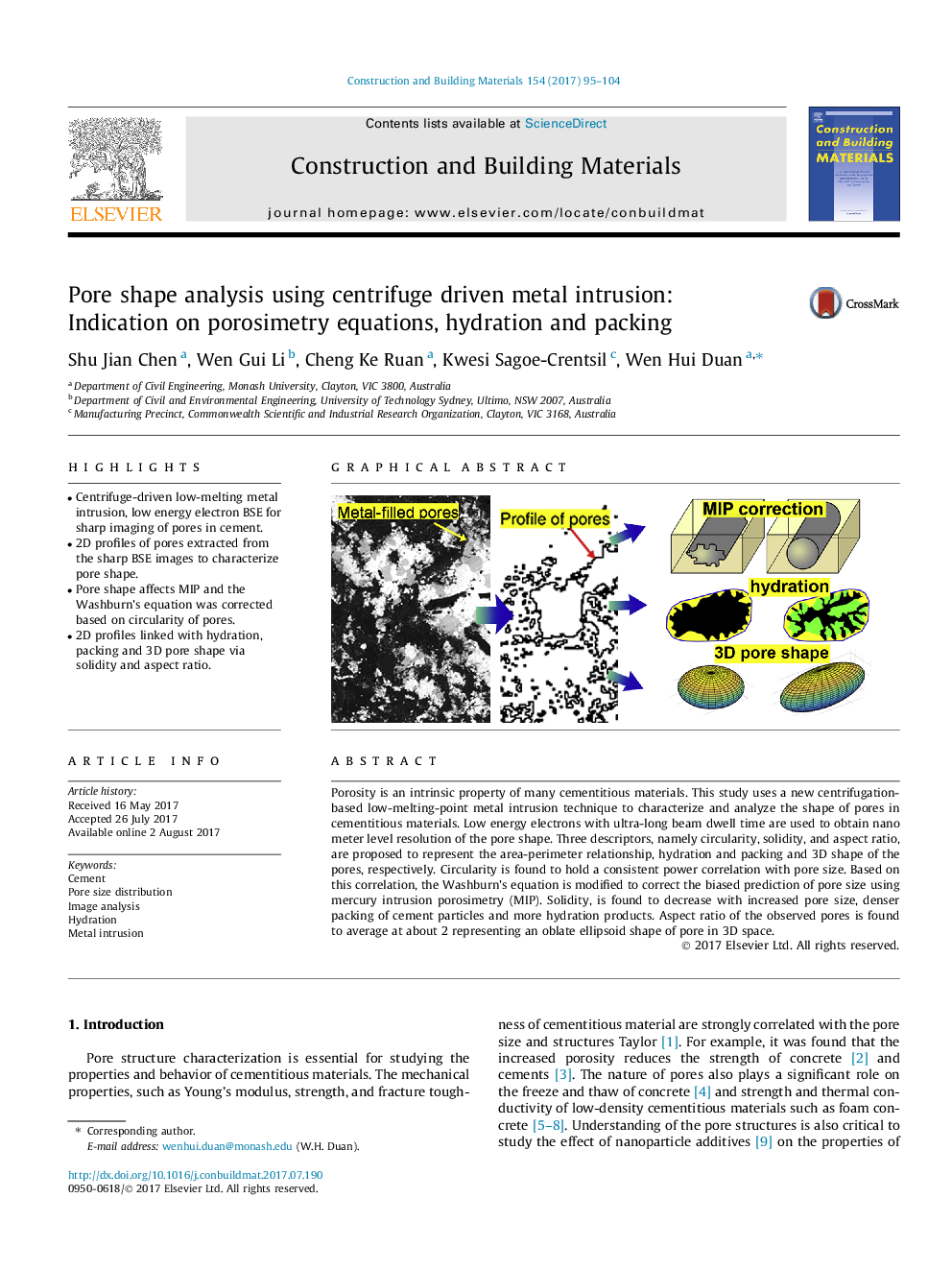| Article ID | Journal | Published Year | Pages | File Type |
|---|---|---|---|---|
| 6480053 | Construction and Building Materials | 2017 | 10 Pages |
â¢Centrifuge-driven low-melting metal intrusion, low energy electron BSE for sharp imaging of pores in cement.â¢2D profiles of pores extracted from the sharp BSE images to characterize pore shape.â¢Pore shape affects MIP and the Washburn's equation was corrected based on circularity of pores.â¢2D profiles linked with hydration, packing and 3D pore shape via solidity and aspect ratio.
Porosity is an intrinsic property of many cementitious materials. This study uses a new centrifugation-based low-melting-point metal intrusion technique to characterize and analyze the shape of pores in cementitious materials. Low energy electrons with ultra-long beam dwell time are used to obtain nano meter level resolution of the pore shape. Three descriptors, namely circularity, solidity, and aspect ratio, are proposed to represent the area-perimeter relationship, hydration and packing and 3D shape of the pores, respectively. Circularity is found to hold a consistent power correlation with pore size. Based on this correlation, the Washburn's equation is modified to correct the biased prediction of pore size using mercury intrusion porosimetry (MIP). Solidity, is found to decrease with increased pore size, denser packing of cement particles and more hydration products. Aspect ratio of the observed pores is found to average at about 2 representing an oblate ellipsoid shape of pore in 3D space.
Graphical abstractDownload high-res image (180KB)Download full-size image
